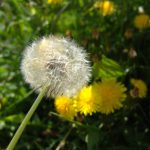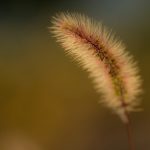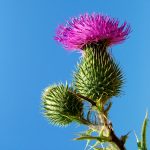 For a rich, lush full green lawn, the solution starts with lawn fertilization. Bailey’s fertilization program keeps your lawn healthy throughout the season and helps protect from the stresses of drought, disease, and insects. More importantly, a healthy turf won’t let weeds stand a chance.
For a rich, lush full green lawn, the solution starts with lawn fertilization. Bailey’s fertilization program keeps your lawn healthy throughout the season and helps protect from the stresses of drought, disease, and insects. More importantly, a healthy turf won’t let weeds stand a chance.
Bailey’s program is developed to give your lawn what it needs at the right time. Here is an in-depth explanation of our 5-application lawn fertilization process guaranteed to give you that healthy green lawn you’ve always wanted:
- Early Spring Application | April – early May
Maintenance rate balanced fertilizer (25% slow release nitrogen). Pre-emergent crabgrass and foxtail control. Dandelion and broadleaf weed control.  Late Spring Application | May – June
Late Spring Application | May – June
Medium rate balanced fertilizer (40% slow release nitrogen). Broadleaf weed control. Pre-emergent crabgrass and spurge control. Sulfate of potash.- Summer Application | July – August
Granular application of non-burning slow release fertilizer with a high rate of sulfate of potash. Spot treatment of yellow nutsedge and summer annual weeds. - Mid-Summer Application | September – October
Heavy rate balanced fertilizer (25% slow release nitrogen). Dandelion and broadleaf weed control. Iron. - Fall Application | Late October – November
Fertilizing good for deep rooting and early spring green-up. Heaviest amount of fertilizer applied at this time. The application is recommended for lawns that are irrigated throughout the season. Broad leaf weed control.
Contact Us today to schedule your FREE lawn care diagnosis to see how Bailey’s lawn care experts can give you the yard of your dreams!
TYPES OF COMMON WEED PROBLEMS
If you’re looking to keep weeds out of your lawn, the first step is to identify which weeds are growing and figure out the problem spots, peak growing season and use the proper treatments to eliminate them from your yard. Bailey’s weed removal applications were developed for this reason, providing both weed elimination and lawn fertilization to feed your lawn and give it what it needs to grow healthy and weed-free. The most common types of weed problems in our area are shown below. Call and talk with one of the Bailey’s lawn care specialists and take back your yard!

Buckhorn Plantain
Buckhorn Plantain is an easily identifiable perennial that regenerates very quickly. It can be often seen in low traffic areas of lawns. This hardy weed can tolerate low mowing heights and soil with high pH levels.
 Crabgrass
Crabgrass
Crabgrass is a summer annual that sprouts up in spring. It often grows in areas of the yard with less turf that have been damaged by grubs, pest, or disease.
Crabgrass prevention is most effective by applying weed control in the early spring and maintaining a healthy turf.
 Dandelion
Dandelion
One of the most prevalent weeds in a maintained turf is the Dandelion. It is also one of the biggest complaints of homeowners due to its yellow flowers that often appear in April and again in the Fall after the summer heat. Dandelions are a very hardy weed and go to seed in about 5-8 weeks. This eyesore can be prevented by raising your mowing height as well as proper fertilizer and weed control applications.

Foxtail
Foxtail is an annual grass and common invader of yards and is identified by its “foxtail” like seed head. This weed is usually found in the summer but germinates in the spring.
The most effective way to prevent Foxweed is to maintain a thick healthy lawn by proper fertilization.
 Ground Ivy
Ground Ivy
This perennial, sometimes known as Creeping Charlie, is a creeping weed that is second to Wild Violets in its difficulty to control.
Ground Ivy can thrive in most lawn conditions but prefers moist shaded areas that are maintained at a low mowing height.

Nutsedge
This common perennial is usually mistaken for grass and is very difficult to control. Nutsedge produces hundreds of thousands of seeds per plant and is often a problem when rainfall is above average. This weed will outgrow the surrounding turf and will commonly invade flowerbeds and gardens.
 Thistle
Thistle
Thistle is a perennial weed with long leaves covered in sharp spines.
Thistle thrives in the hotter months and is more common in unmaintained yards.
Consistent mowing and proper fertilization will create a turf that resists infestations of thistles.

White Clover
White Clover is one of the most common weeds as well as one of the most difficult to control.
This weed can flourish in poor soil conditions and can be an indicator of a nutrient deprived lawn.
 Wild Violets
Wild Violets
Wild Violet is difficult to control because of its rapid and aggressive growth as well as its resistance to most herbicides.
Wild Violets are commonly found in shaded areas and flower in mid-May.
